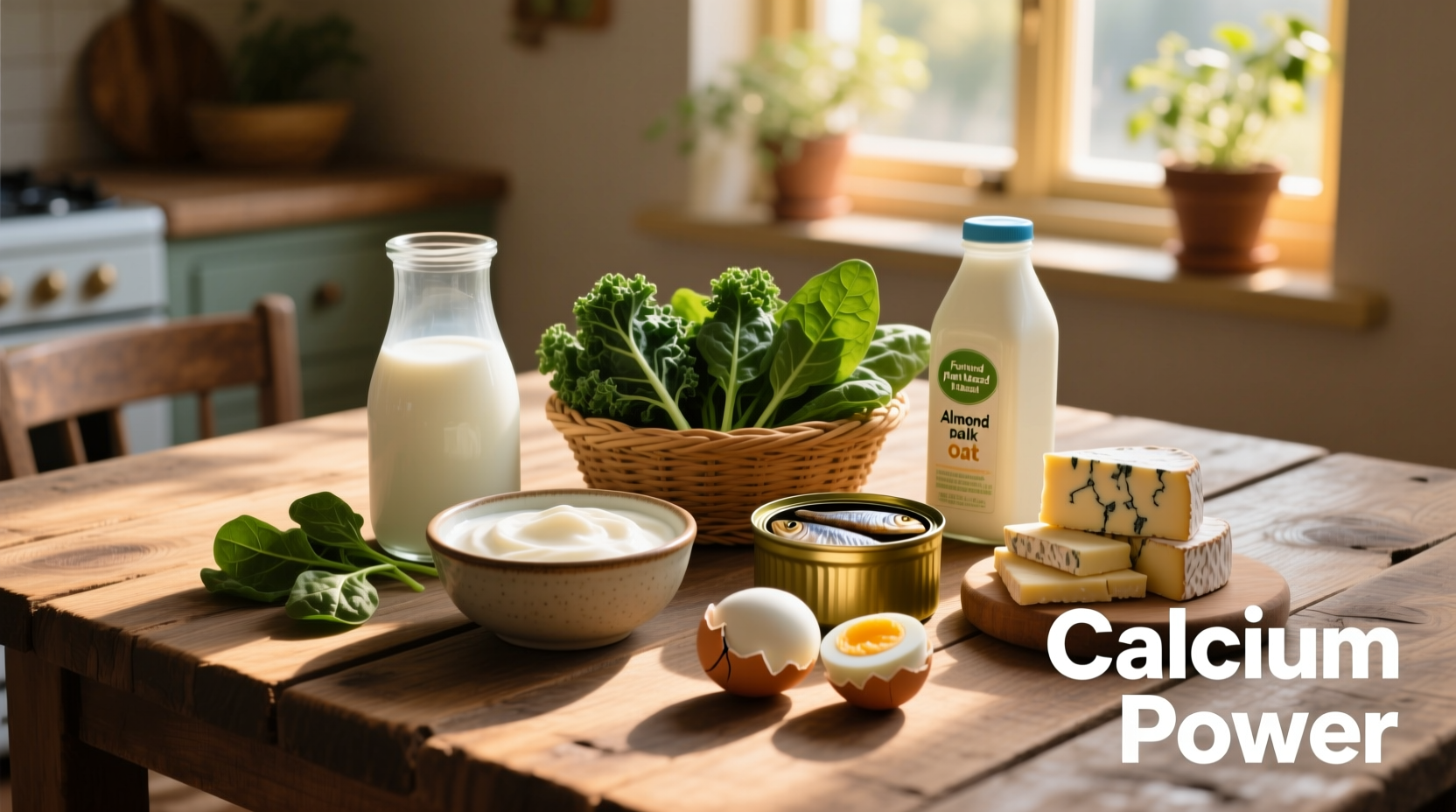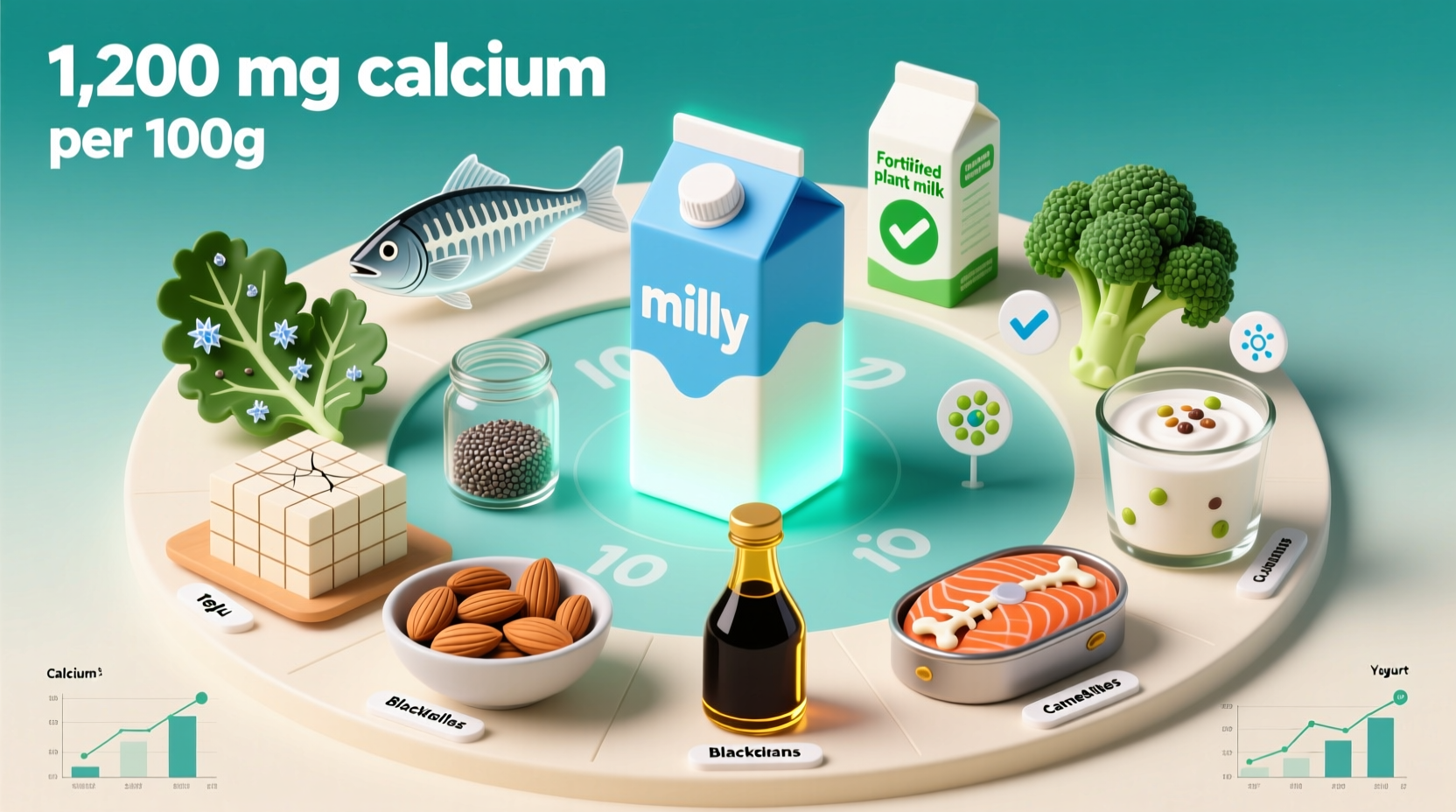Why Calcium Matters for Your Health
Calcium isn't just for strong bones—it's essential for nerve transmission, muscle function, and blood clotting. Adults aged 19-50 need 1,000mg daily, while women over 50 and men over 70 require 1,200mg according to the National Institutes of Health. But not all calcium sources are equally effective—bioavailability matters as much as quantity.
Top Calcium-Rich Foods Ranked by Bioavailability
When evaluating calcium sources, we must consider both concentration and absorption rates. Dairy products have high calcium content but some people struggle with lactose. Plant-based sources often contain compounds like oxalates that reduce absorption. Here's how common foods compare:
| Food (100g serving) | Calcium (mg) | Absorption Rate | Calcium per Calorie |
|---|---|---|---|
| Sesame seeds (unhulled) | 1,400 | 21% | 14.0 |
| Tahini (sesame paste) | 650 | 21% | 13.0 |
| Collard greens (cooked) | 141 | 40-60% | 28.2 |
| Fortified soy milk | 120 | 25-30% | 24.0 |
| Cheddar cheese | 721 | 30% | 7.2 |
| Whole milk | 113 | 30% | 5.7 |
| Spinach (cooked) | 115 | 5% | 1.2 |
Data sourced from USDA FoodData Central and absorption rates from National Library of Medicine research. Note that spinach contains high calcium but its oxalate content severely limits absorption.
Calcium Absorption: What Most Articles Don't Tell You
Simply consuming high-calcium foods isn't enough. Your body's ability to absorb calcium depends on several factors:
- Vitamin D status—without sufficient vitamin D (from sunlight or diet), calcium absorption drops to 10-15% versus 30-40% with adequate levels
- Food combinations—pairing calcium-rich foods with vitamin C sources boosts absorption, while high-sodium diets increase calcium excretion
- Life stage considerations—children absorb 60% of dietary calcium, adults 25-30%, and postmenopausal women only 15-20%

Practical Calcium-Boosting Strategies
Based on clinical nutrition research, here are evidence-based approaches to maximize your calcium intake:
Daily Calcium Distribution
Your body can only absorb about 500mg of calcium at one time. Instead of consuming all your calcium in one meal, spread intake throughout the day:
- Breakfast: Fortified plant milk in smoothies (300mg)
- Lunch: Collard greens salad with tahini dressing (250mg)
- Snack: Almonds and figs (150mg)
- Dinner: Sardines with bone (300mg)
Special Considerations for Different Diets
Whether you're vegan, lactose intolerant, or following specific dietary restrictions, these tailored approaches work:
- Vegans: Prioritize unhulled sesame seeds, fortified plant milks, and low-oxalate greens like bok choy. Consider a calcium citrate supplement if needed.
- Lactose intolerant: Choose hard cheeses (naturally low lactose) and lactose-free dairy products. Greek yogurt often tolerates better than milk.
- Postmenopausal women: Combine calcium-rich foods with weight-bearing exercise to maximize bone density retention.
Calcium Myths Debunked
Let's address common misconceptions with evidence from clinical studies:
- "Milk is the best calcium source"—While dairy provides calcium, its absorption rate (30%) is comparable to many plant sources. Collard greens actually offer better calcium-per-calorie efficiency.
- "More calcium always means stronger bones"—Excessive calcium (>2,000mg/day) may increase cardiovascular risk according to American Heart Association research.
- "Plant milks are nutritionally equal to dairy"—Many fortified plant milks match calcium content but lack naturally occurring nutrients like vitamin B12 and potassium found in dairy.
Your Personalized Calcium Plan
Creating an effective calcium strategy requires understanding your specific needs:
- If you're under 30: Focus on building peak bone mass with 1,000mg daily from diverse sources
- If you're pregnant or breastfeeding: Maintain 1,000mg daily—your body naturally increases absorption during these periods
- If you're over 50: Increase to 1,200mg daily and pair with vitamin D3 (600-800IU) and weight-bearing exercise
- If you have osteoporosis: Consult your physician about optimal intake (often 1,200-1,500mg) combined with medication
Remember that calcium works synergistically with magnesium, vitamin K2, and vitamin D—focusing solely on calcium without these supporting nutrients limits effectiveness.











 浙公网安备
33010002000092号
浙公网安备
33010002000092号 浙B2-20120091-4
浙B2-20120091-4